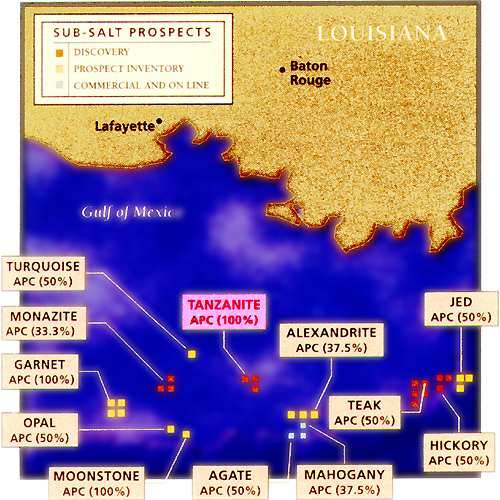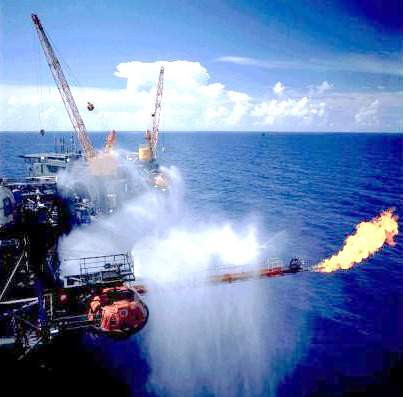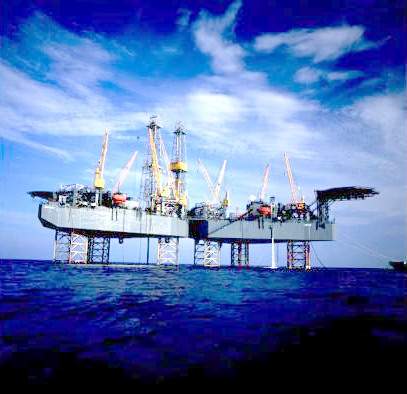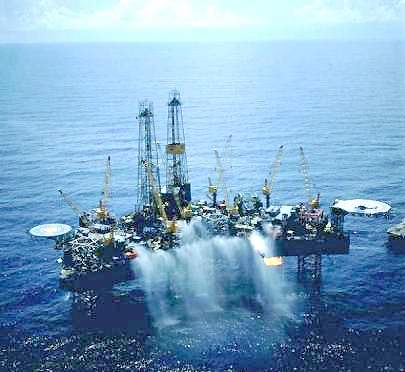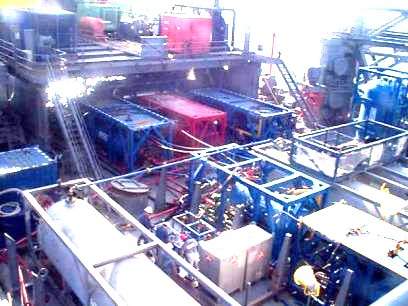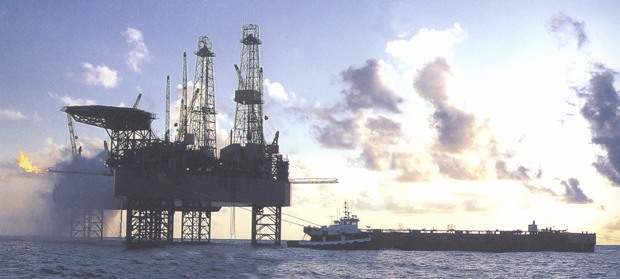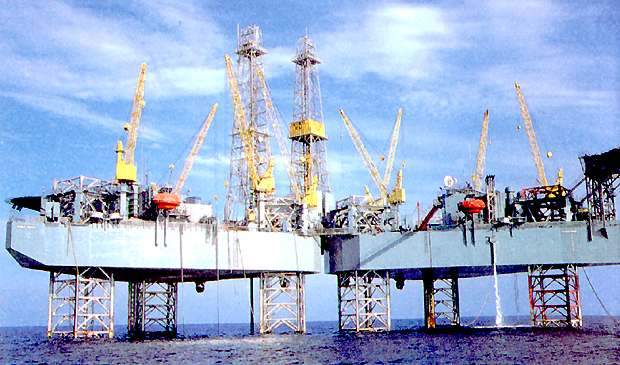Tanzanite is a subsalt discovery, containing reserves of at least 140 million energy-equivalent barrels. The current reservoir interpretation indicates proportionately higher gas reserves than oil.
Tanzanite is located at Eugene Island block 346, in the Gulf of Mexico, about 75 miles offshore Louisiana. It lies in approximately 314ft of water.
DEVELOPMENT
Prior to the drilling programme, a number of operators pulled out of the well, leaving Anadarko with a 100% working interest in the Tanzanite field.
Anadarko originally acquired some subsalt leases in 1992-94, based on its interpretation of 2D seismic data. It then employed 3D seismic data to give the interpreters a view of the gas amplitude. This, however, did not reveal the underlying oil leg or the oil leg’s extent below the salt.
Seismic images showed the salt bodies to have highly irregular surfaces. Long offsets were vital so that streamers picked up energy and the steeply dipping beds could reflect long lateral distances from the feature being shot.
The Tanzanite exploration well, OCS-G 14482 (or Tanzanite no 1) was drilled to a total depth of 14,350ft by the Rowan Odessa. The well encountered more than 450ft of continuous pay, believed to be one of the thickest pay intervals ever found in the Gulf of Mexico. The only problem encountered at Tanzanite was an ‘unintentional sidetrack’ that occurred in a salt withdrawal zone, just below 11,000ft.
The stabilised flow rate of 21,917BOPD was achieved from the 50ft section, through a 1.25in choke, with a flowing tubing pressure of 2,679psi. API oil gravity was at 21.9°. The well also tested 29.7 million cubic feet per day (MMcf/d) of solution gas. Porosity was found to be above 30% in the main reservoir. Oil gravity was in the low-to-mid 20s.
In order to accommodate such a large flow rate, a second jack-up rig was installed so as to hold the production testing equipment. Conducting the test required 120 crewmembers.
Based on seismic interpretation, the reservoir is believed to extend for more than 1,000 acres. Above it are three other zones totaling about 70ft of net pay. Gross sand thickness is nearly 800ft. This translates to 140 million barrels of oil equivalent.
Tanzanite costs were $14 million to top of the pay and $3 million more to TD. Including tests, the well will cost a total of approximately $20 million.
The discovery well, being saved for future production, is near the centre of the north-west quarter of block 346, and part of the field extends north onto block 345. For the development, Anadarko installed a sea-floor drilling template (a well guide) on location, before drilling the initial development well.
PLATFORM
The Aker Gulf Marine yard in Ingleside, Texas won the contract for the steel jacket, platform deck and piling. Houston-based Enercon Engineering, Inc provided the engineering and procurement for the Tanzanite project. Enercon designed the deck and topsides using 3D CADD PDMS software.
The topsides have been equipped for both drilling and production activities and will weigh approximately 4,000t.
The topsides are supported by a four-legged steel jacket.
The Tanzanite platform was designed concurrently with Anadarko’s Hickory platform, so resulting in a high degree of commonality in terms of equipment used, process configuration, piping and instrumentation/electrical systems applied. The Tanzanite platform was designed to include programmable logic controllers rather than pneumatic air systems.
INSTALLATION
The platform will be installed either by Heerema’s heavy-lift barge SSCV Balder or the SSCV Hermod.

